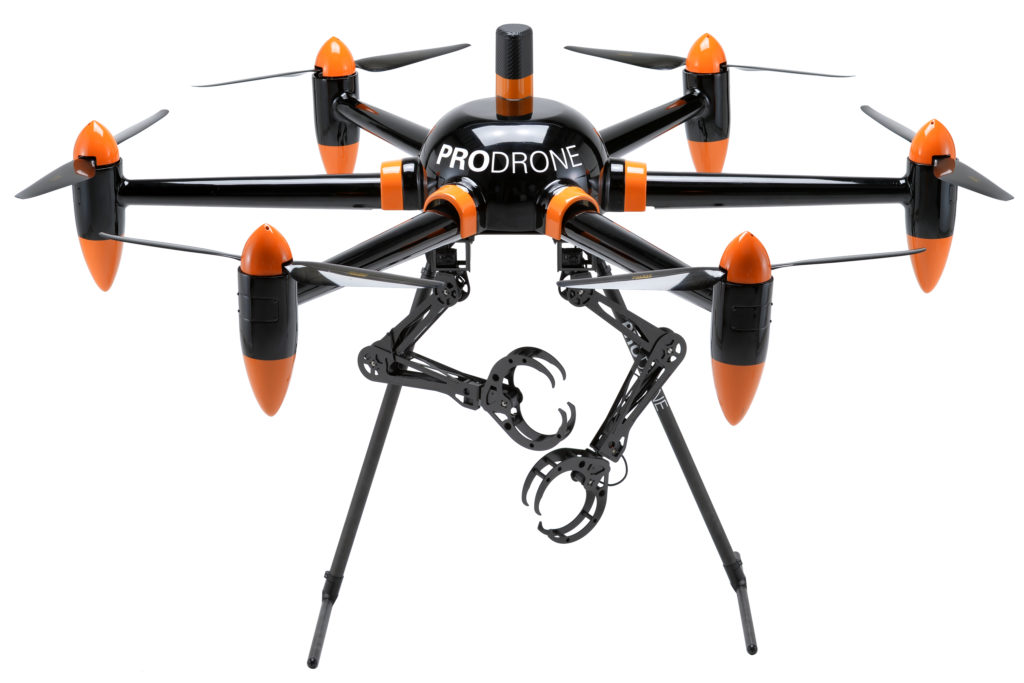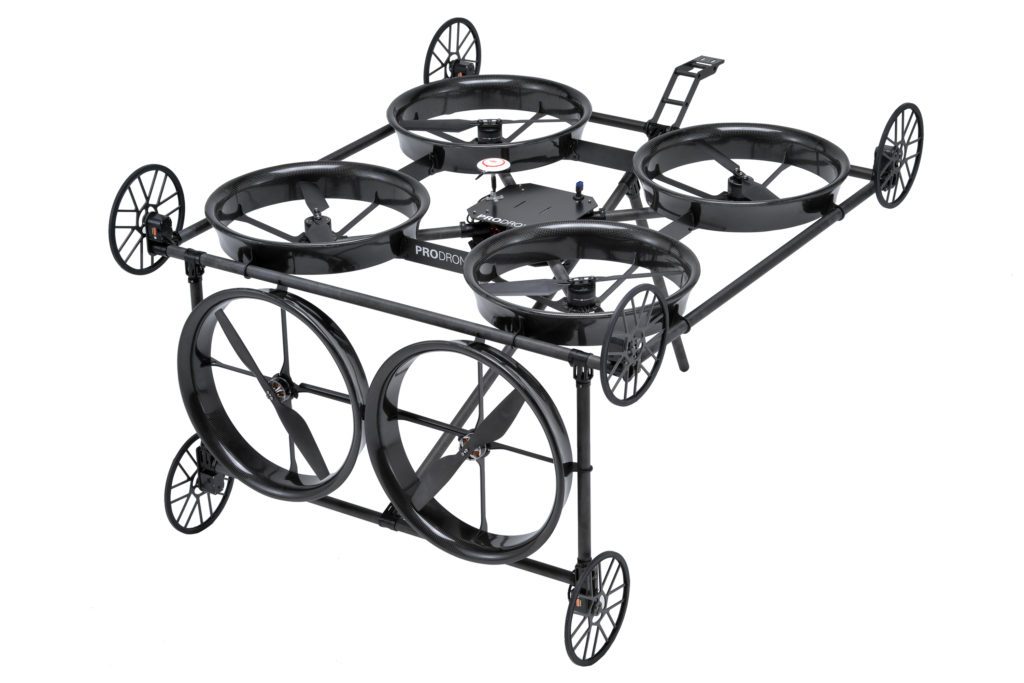At the InterDrone show in Las Vegas PRODRONE has introduced two drones for industrial use that have unique features for wide range of commercial tasks.They are the PRODRONE PD6B-AW-ARM and the PD6-CI-L
PRODRONE PD6B-AW-ARM

The PRODRONE PD6B-AW-ARM is a large-format drone equipped with two internally-developed robotic arms, enabling it to directly accomplish a variety of tasks allowing it to directly perform specific “hands-on” operations.
Examples include:
- the ability to grasp and carry differently shaped cargo using its arms
- to attach or join things; to cut cables; to turn dials
- to flick switches; to drop lifesaving buoys
- to retrieve hazardous materials, etc.
Drones must be able to perform a variety of operations at high altitudes, over long distances, and in places where it would be too dangerous for humans.
The PD6B-AW-ARM has a maximum payload of 20kg (44 lbs.) and two high-performance, completely original 5-axis robotic arms. These arms can carry a maximum payload of approximately 10 kg (22 lbs.) with a flight time of up to 30 minutes.
PRODRONE’s CEO, Masakazu Kono commented, “PRODRONE has won high acclaim from numerous industrial drone businesses because we develop highly reliable, highly safe, high-performance industrial drones. We are firmly focused on the future of commercial drones and on being world pioneers in developing ‘task-oriented drones.’ The PD6B-AW-ARM makes a whole new range of tasks possible, and I am confident that nobody else could have made it.”
PD6-CI-L

The PD6-CI-L is a a self-propelling surface-clinging drone able to inspect both ceilings and vertical surfaces aimed at the civil infrastructure inspection market.
The PD6-CI-L addresses a key pain point in bridge inspection. Unique environmental conditions like powerful wind gusts often make it difficult for traditional drones designed to hover to complete inspections.The PD6-CI-L does not inspect while hovering, rather it uses negative pressure to cling directly to the inspection surface. The design enables accurate image capture by maintaining a constant focal distance from the inspection surface. Not only is the PD6-CI-L able to inspect ceilings (horizontal surfaces), but with its L-shape it can also cling to walls (vertical surfaces) – all in the one machine. This enables the drone to perform in a wider range of situations, as it cannot merely inspect bridges, but also the walls of any type of architectural structure.
The design of the PD6-CI-L is based on PRODRONE’s first surface-clinging infrastructure inspection drone, the PD4-CI. The new PD6-CI-L refines the ideas behind the first model, which could only cling to ceilings. By building on requests received from many members of the industry, PRODRONE expects to expand the utility of its infrastructure inspection drones.
Frank Schroth is editor in chief of DroneLife, the authoritative source for news and analysis on the drone industry: it’s people, products, trends, and events.
Email Frank
TWITTER:@fschroth







Leave a Reply